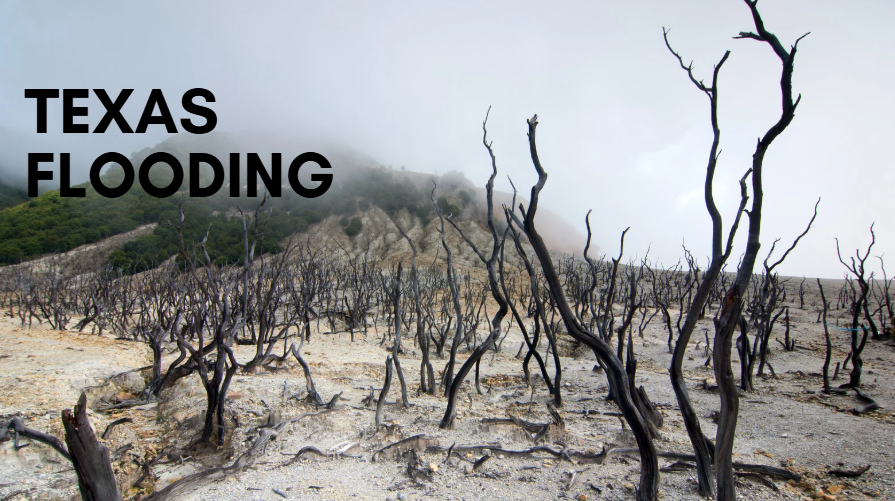Texas Flooding is becoming a serious problem. Heavy rain, strong storms, and rising rivers have caused damage to homes, roads, and businesses. What can we do to stay safe?
ALSO READ : mcdonald:s big announcement
In this article, we’ll explain the causes of Texas flooding, who is affected, and how people can prepare for future floods.
What Is Causing the Texas Flooding?
Flooding happens when water rises and covers areas that are usually dry. In Texas, floods often come from:
Heavy Rainstorms
Texas sometimes gets a lot of rain in a short amount of time. When the ground cannot soak it up fast enough, the water builds up and causes flooding.
Overflowing Rivers
Rivers and lakes in Texas can rise when it rains a lot. If they rise too high, they overflow and flood nearby areas.
Hurricanes and Tropical Storms
Storms from the Gulf of Mexico can bring huge amounts of rain. These storms can last for days and cause major flooding, even far from the coast.
Poor Drainage
In some cities, the water has nowhere to go. Streets, buildings, and parking lots don’t absorb water well. That makes it easier for floods to happen.
Which Areas Are Most Affected?
While flooding can happen anywhere in Texas, some areas are hit harder than others. These include:
- Houston and Southeast Texas – This area is low and often gets heavy rain.
- Central Texas – Rivers and lakes can rise quickly here.
- North Texas – Strong storms can cause flash flooding.
- Coastal areas – Closer to the Gulf, these areas face storms and sea flooding.
How Flooding Affects People and Communities
Floods can cause serious damage. They don’t just fill streets with water—they also affect homes, jobs, and lives.
Property Damage
Water can ruin homes, cars, furniture, and appliances. Repairing flood damage is expensive and takes a long time.
Power and Water Problems
Floods can knock out power lines and damage water systems. This can leave people without electricity or clean drinking water.
Road Closures
When roads flood, people can’t drive to work, school, or stores. Emergency vehicles may also struggle to reach those in need.
Health Risks
Standing water can carry bacteria and dangerous chemicals. Mold grows in wet buildings and can cause breathing problems.
How Is the Government Responding?
The Texas government and local leaders are taking steps to help people and reduce future flooding. Here’s what they’re doing:
- Emergency services are rescuing people and giving them food and shelter.
- City workers are clearing blocked drains and checking flood zones.
- Weather alerts warn people early, so they have time to prepare.
- Flood prevention projects like better drainage and flood walls are being built.
Still, many say more work is needed to prepare for stronger storms in the future.
What Can You Do to Stay Safe During a Flood?
You can take steps to protect yourself and your family before, during, and after a flood.
Before a Flood:
- Check the weather forecast and local alerts.
- Know if your home is in a flood zone.
- Keep emergency supplies like food, water, flashlights, and medicine.
- Buy flood insurance if you live in a high-risk area.
During a Flood:
- Move to higher ground right away.
- Never walk or drive through floodwater— “Turn Around, Don’t Drown.”
- Stay inside and listen to the news for updates.
After a Flood:
- Don’t return home until it’s safe.
- Avoid touching water-soaked power lines or electric items.
- Wear gloves and a mask to clean up.
- Take photos for insurance claims.
How Climate Change May Be Making It Worse
Experts say that climate change may be causing more intense storms and flooding in Texas. Also, rising sea levels may cause more coastal floods during storms.
As the weather changes, Texas may see more flooding in the future. That’s why it’s important to take steps now to protect our homes and communities.
Conclusion
Flooding in Texas is a growing problem, but with the right knowledge and preparation, people can stay safe. Listen to weather warnings, be ready with supplies, and know your flood risk.
As storms grow stronger and floods more common, it’s up to all of us—government, communities, and individuals—to be prepared. Texas is strong, and together, we can face the challenges of flooding and build a safer future.
FAQs
Why does Texas flood so often?
Texas has many rivers, flat land, and often gets heavy rain or storms. These all increase the chance of floods.
Is it safe to drive during a flood?
No. Even 6 inches of water can make car lose control. Never drive through floodwater.
What help is available for flood victims?
Local and federal aid may offer shelter, food, and funds. You can contact FEMA or your local government.
Can flooding be predicted?
Yes. Weather experts track storms and rainfall. You can follow alerts from the National Weather Service or local news.
What should I keep in an emergency kit?
Water, non-perishable food, a flashlight, batteries, a first aid kit, medicines, a phone charger, and important documents.

